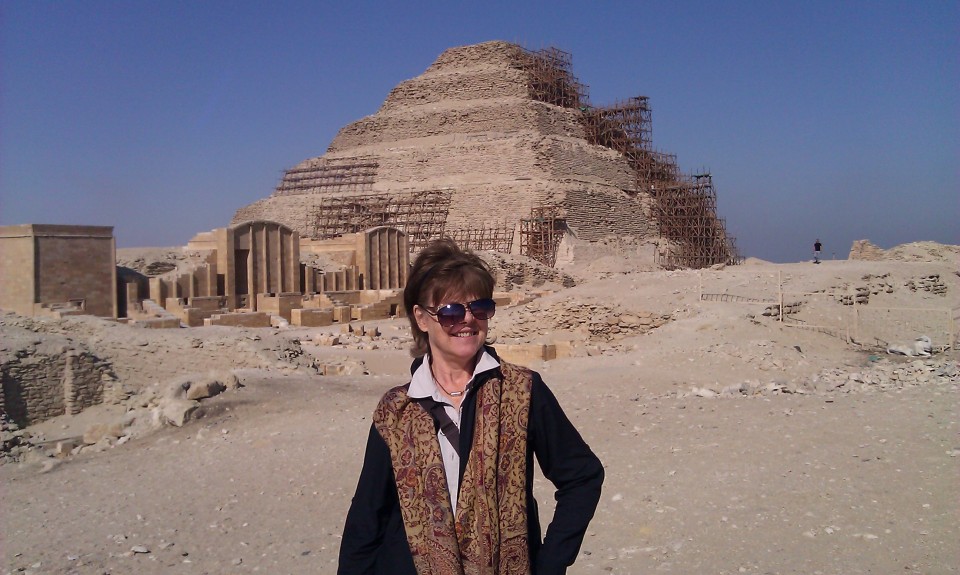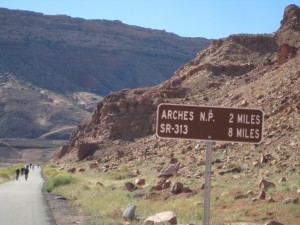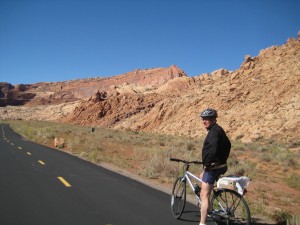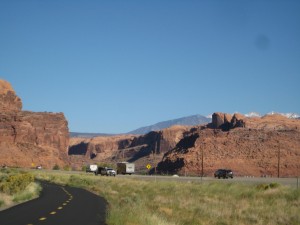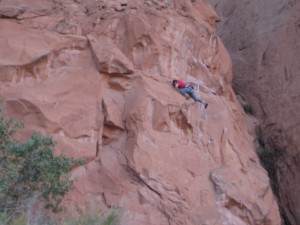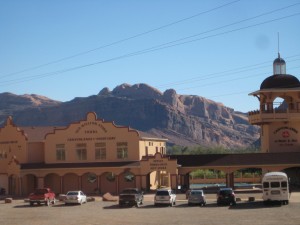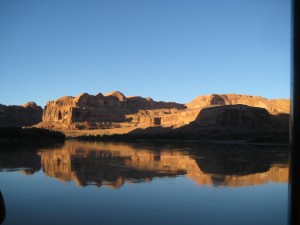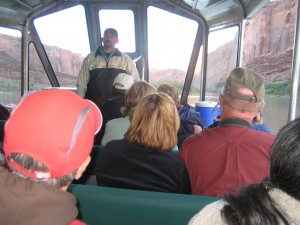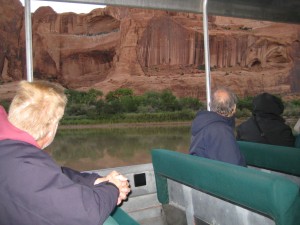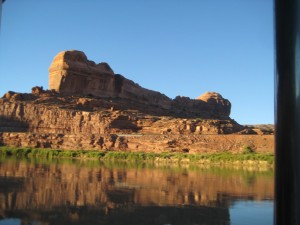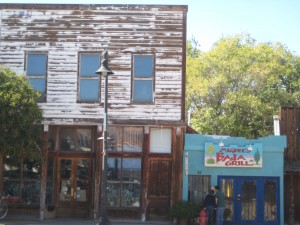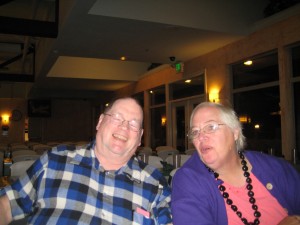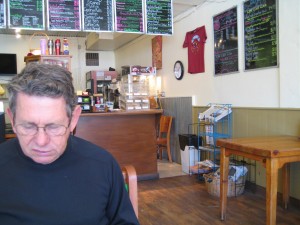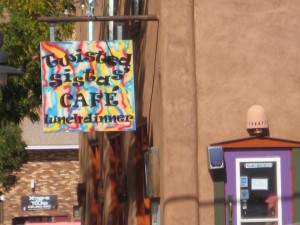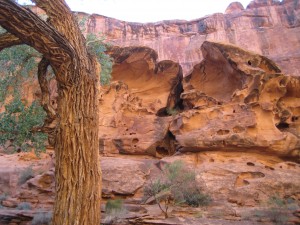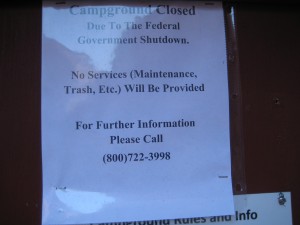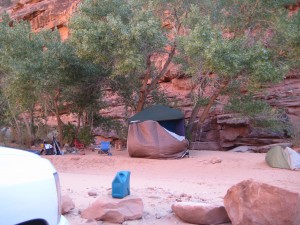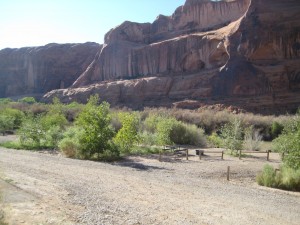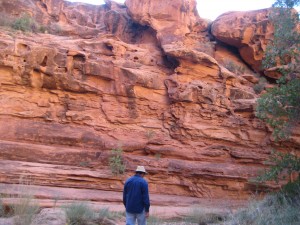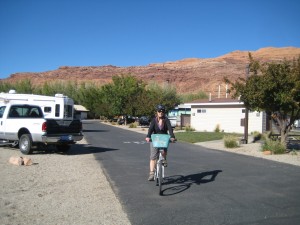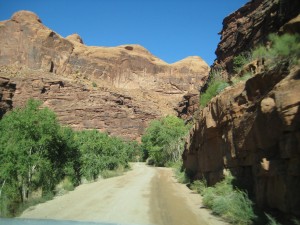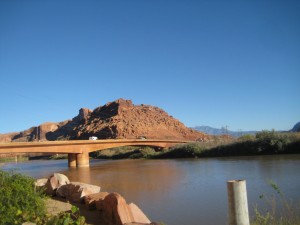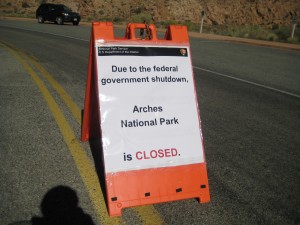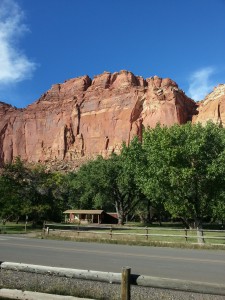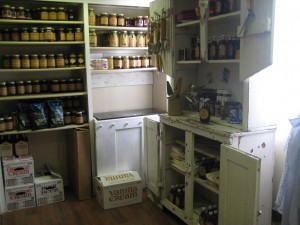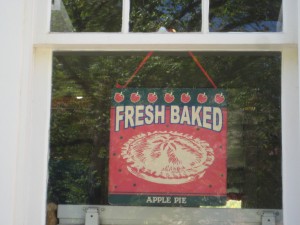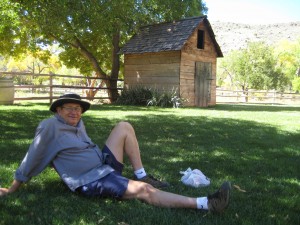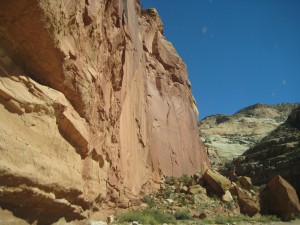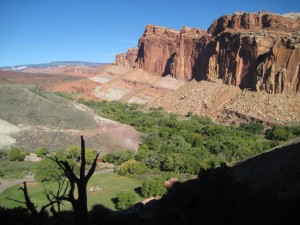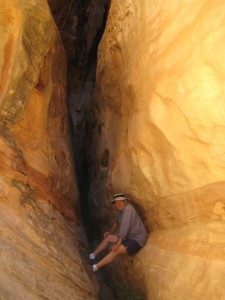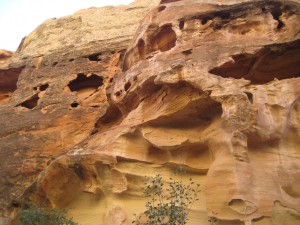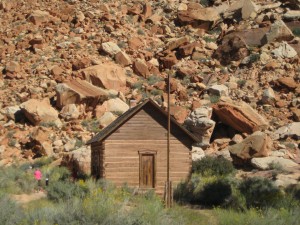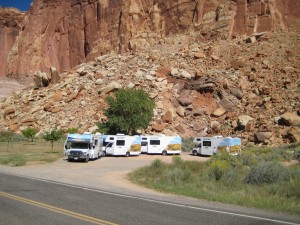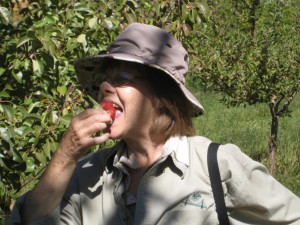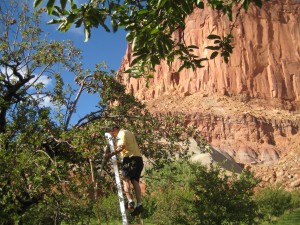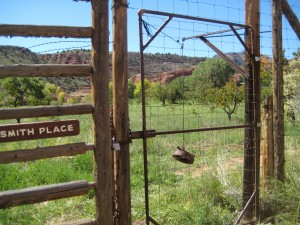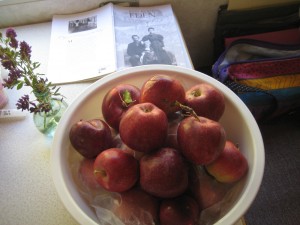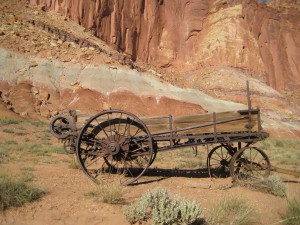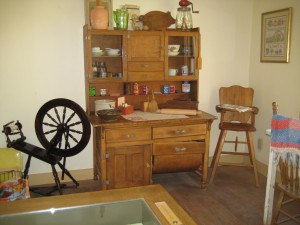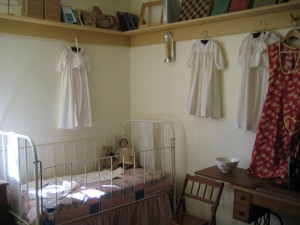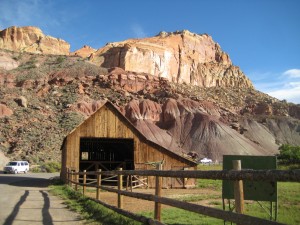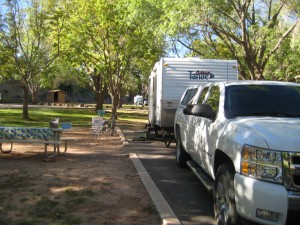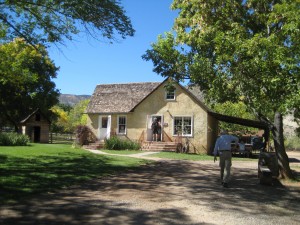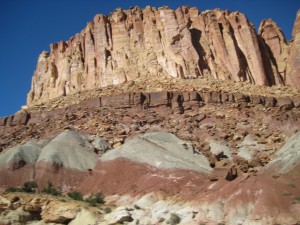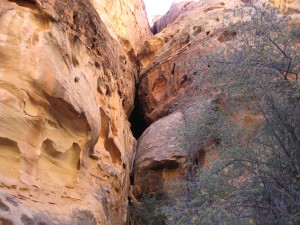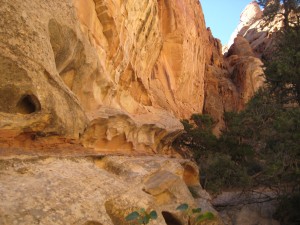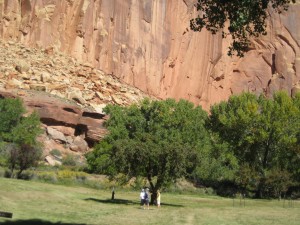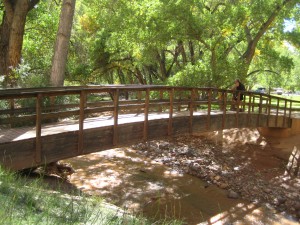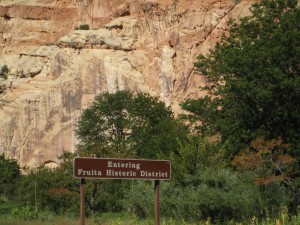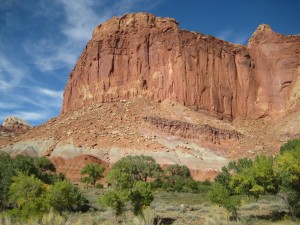Love the bike paths that enable amateur bikers like myself to have a grand time. We biked from the edge of Moab to Arches National Park, as serious bikers streaked past us, but we were content to go at our own pace, enjoying the sunshine, the red canyon walls, the rock formations, the beauty all around us. It was a warm, crisp fall day and the canyons stood out sharply against the blue sky. The Colorado River was a sluggish gray green, winding through the canyon, life-giving water but the river looks old, worn, tired.
Loved Canyonlands by Night or Day where we stopped on our bike ride and signed up for a jet boat tour of the Colorado River. We met at 5:15 pm and boarded our boat at 5:30. It was warm and sunny. With the first jet stream of river water splashing us as the boat sliced through the river, a chill set in. We moved from the upper level in the back of the boat to the more protected lower level and with our jackets and scarves, were kept from shivering. We sped 18 miles down river as the sun set. Some of the highlights were climbers scaling the rock walls, petroglyphs, arches, the magnificence of the canyon from the river, the light on the river as the sun set. We observed from the safety of our boat human specks high on the rim of the rock canyon when our guide asked us if we liked to see people jumping off cliffs. Suddenly we saw a body flying through space, then a black parachute opened and the parachute floated down into the canyon and disappeared.
Our guide had an excellent schtick, referring to himself as a local and he kept the jokes rolling. The locals don’t mountain bike, he said, but they love to hang out at the trails to see the bikers come down, then the ambulance. That led to our guide telling us Moab had had nine rock climbing fatalities this year. Search and Rescue is called at least three times a day to rescue mountain bikers, lots of broken bones, mainly broken legs. On our boat, there were tourists from New Zealand, UK, Ohio, Atlanta, Canada, Georgia, Washington, Oregon, Texas, and one man from Utah. According to the guide, only 2% of their visitors are from Utah. Tourism is Utah’s main industry, second is movies, third is mining, predominantly potash.
Don’t like this about Moab: traffic is horrible; and the bikers are part of the problem. Getting through town, we constantly had to be on the lookout for a biker flying down the street or around a corner. You can’t walk down a sidewalk without encountering a biker. Granted, there was a bike manufacturers gathering, “Outerbike” where the bikers could demo bikes, party, drink, eat and test the bikes on Moab’s world class trails. If that added to the mayhem, it was true Sunday was calmer and less hectic, much easier to get around. The main street through the middle of Moab is where all the traffic must drive to get through town, huge trucks included.
Our River Cruise ended with a chuck wagon dinner, a buffet of BBQ pork, beef, chicken and all the trimmin’s. We met Sally and Glen at dinner. A 30-year Lockheed employee, Glen moved to Washington as soon as he retired. Sally’s business was sewing tote bags, and she could make as much as $1000 a weekend at community craft fairs. All in all, a great evening and finale to our Moab stay.
Love about Moab: some great coffee shops. Red Rock Bakery and Cafe on Main has a latte to compete with Peet’s Coffee and the barrister was sweet, foaming and mixing the hot milk like it was an art form.
Loved all the restaurants in Moab. Twisted Sista’s was a small plates joint, very lively and the spiciest Bloody Mary I’ve ever had — probably mixed for young bikers.
Didn’t like: a touted hike at Hunter Canyon on Kane Creek Canyon Road, said to be 2 miles one-way along a free flowing stream. After driving 7 miles out Kane Creek Canyon Road, we found the trail by a camp and if the trail was 1/2 mile at most, I’d be exaggerating so how they came up with 2 miles beats me. Directions said to follow the hiker-established path until the route gets blocked by brush, which it appeared to be within the first few feet.
The dirt road out to Kane Creek is a beautiful drive along the Colorado River, but that Saturday it was crawling with cars, bikers, ATV’rs. Even the ranger was seen kicking people out of the BLM campgrounds along the Colorado River which sat forlorn and empty as people scrambled to find a place along the river for outdoor adventure.
Really loved the biker-friendliness of Moab. According to our tour guide, mountain biking didn’t really catch on in Moab until 1989. Now everyone in town is trying to cash in on the trend — bike shops like Poison Spider – gear shops – restaurants that serve breakfasts like Fisher Tower French Toast, Biker Buckwheat breakfast, the Rapid Rafters Breakfast, the Mountain Biker Breakfast. This town worships the outdoor afficiondo and has a totally different vibe from any other Utah town we had visited. Bikers rule here! It was unique to be in a town that gave the bicycle as much respect as the automobile. We loved that we could ride from downtown Moab several miles to Arches National Park on a paved path that had its own bridge across the Colorado River. How cool is that? Moab Canyon Pathway continues for eight miles beyond Arches to Canyonlands and the turnoff to Dead Horse State Park. The Moab Canyon path is but one of dozens of bike trails that range from beginner to the world-famous, highly technical Slickrock Bike Trail.
Once we found 500 West rather than ride the Main Street through town, loved that we could bike downtown from our RV Park, Portal RV Park. We loved the Mill Creek Parkway, a two-mile path through Moab for bikers and pedestrians. Moab has a supermarket with fresh produce; something we missed since leaving Zion and Bryce. Even though Moab’s Farmers Market was small, we were eager to buy as much fresh produce as we could get our hands on.
Love it or leave it — Moab has its charms and detractions. The Portal RV Park was a good stopover with nice views, all the amenities, several ponds and even a beach, good WiFi, and best of all it is a couple blocks off the main highway. Despite not getting to use our reservations for Arches National Park, Moab was a good place to catch up, shop, restock groceries, do laundry and bike.
We stayed four nights in Moab — the same four nights we had reservations at Arches National Park and were looking forward to seeing Arches but like all the other visitors to the National Parks in Utah, we ran into this:
